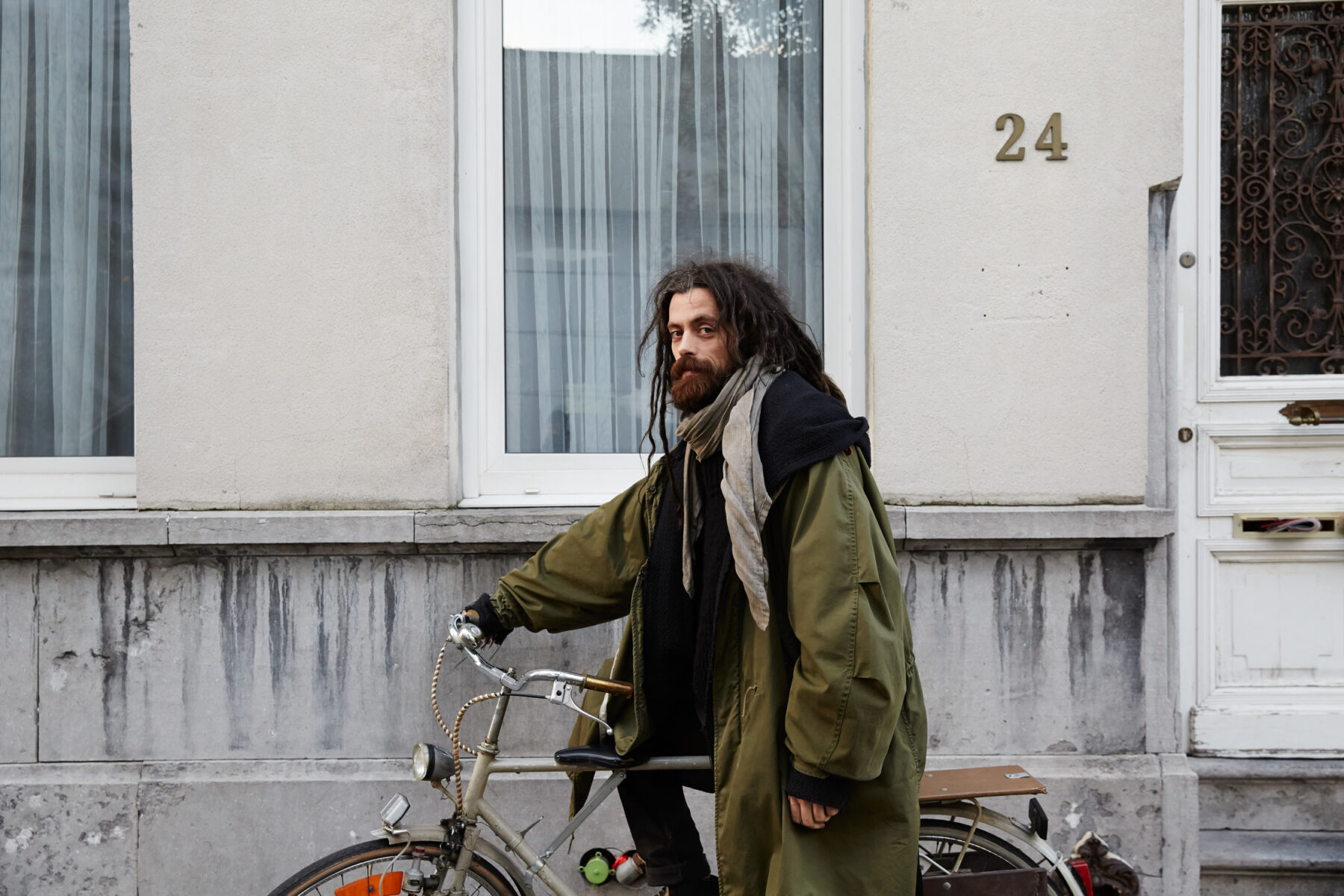Much like his work, a conversation with Belgian fashion designer Jan-Jan van Essche is more about what it evokes rather than its tangible components.
It is not just the quantity of words that captivates, nor the way he speaks. And the clothing, textiles and his distinctive design are only parts of the equation. What really stands out are the elements behind all that and what Jan-Jan reveals through his practice. And within our conversation.
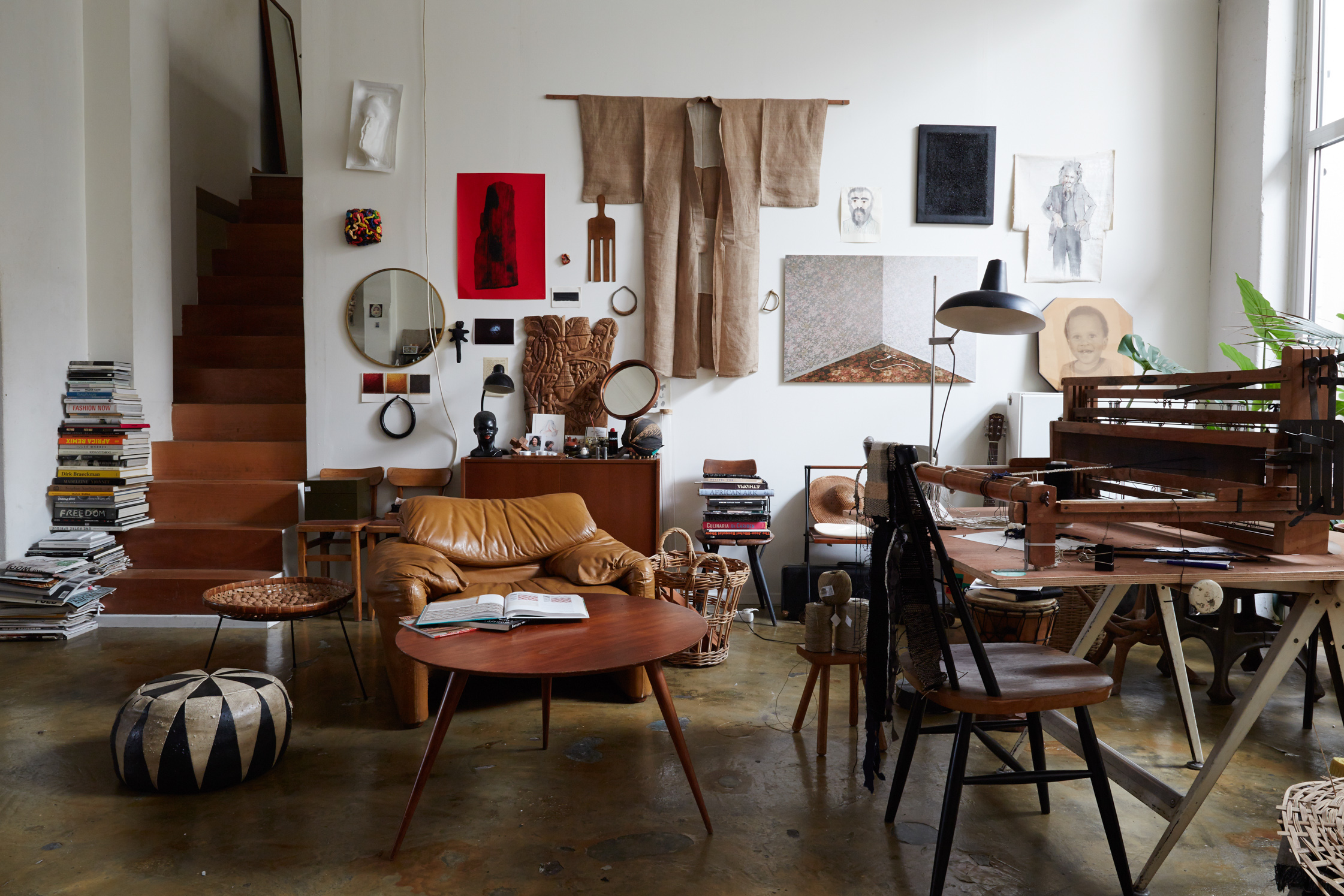
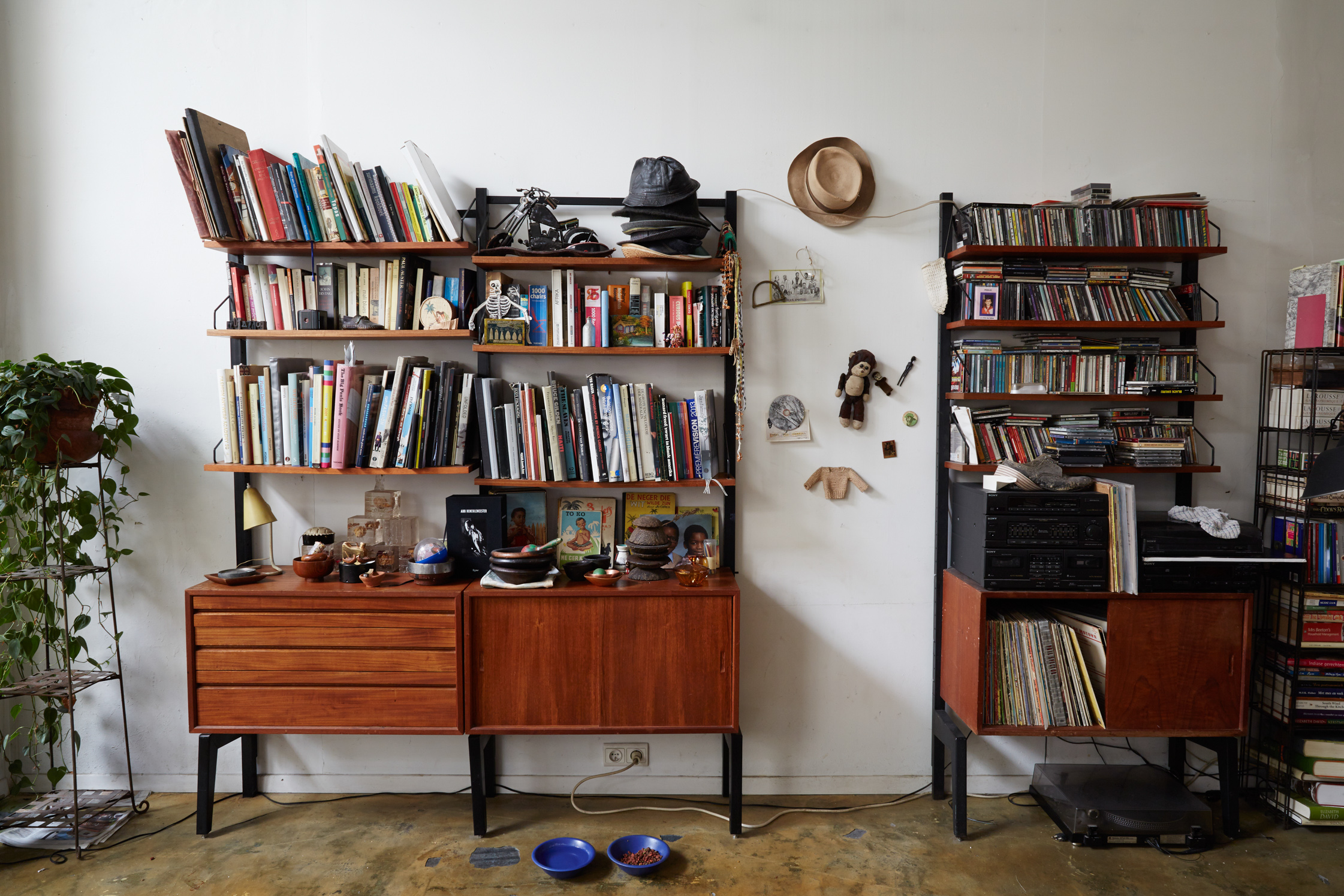
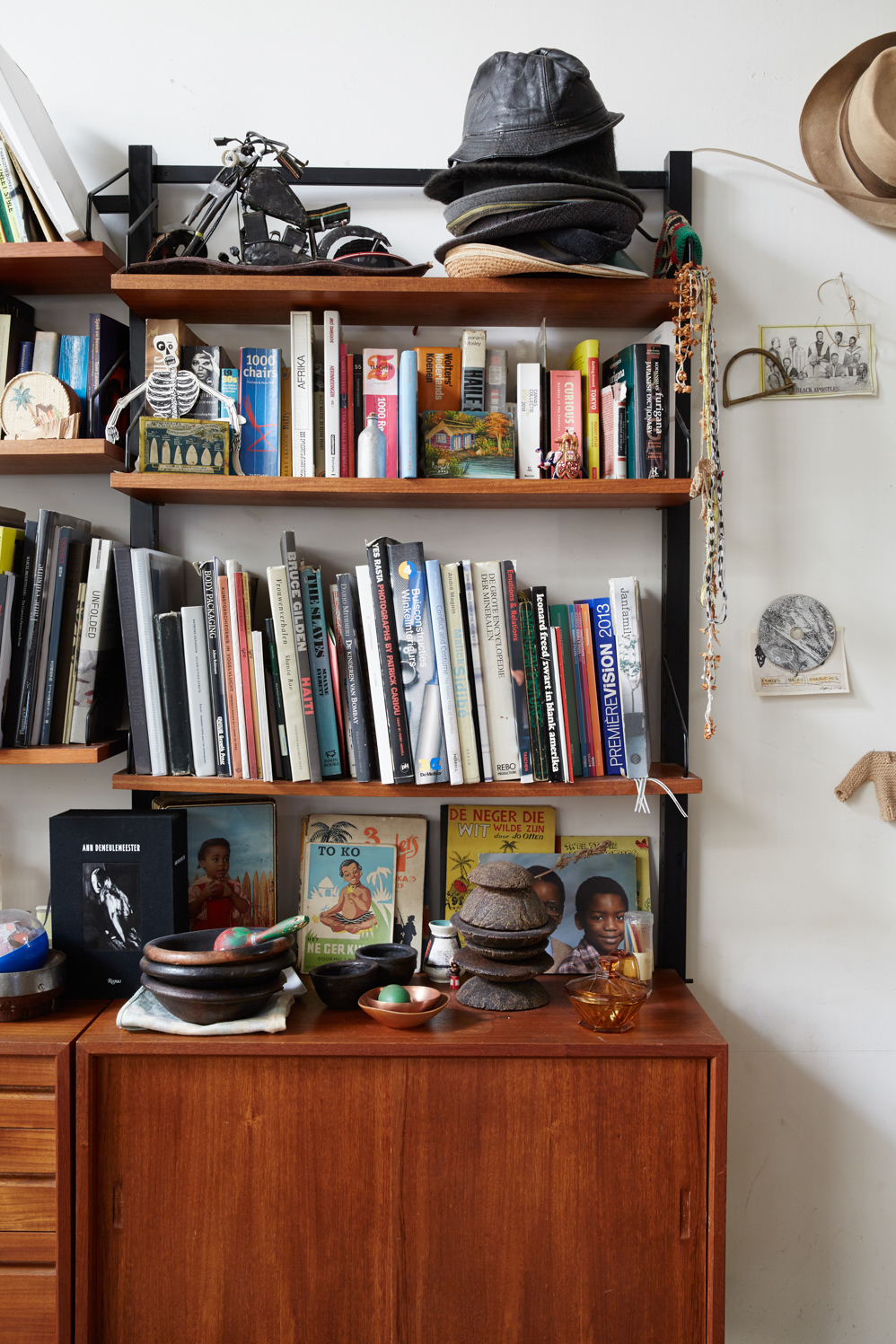
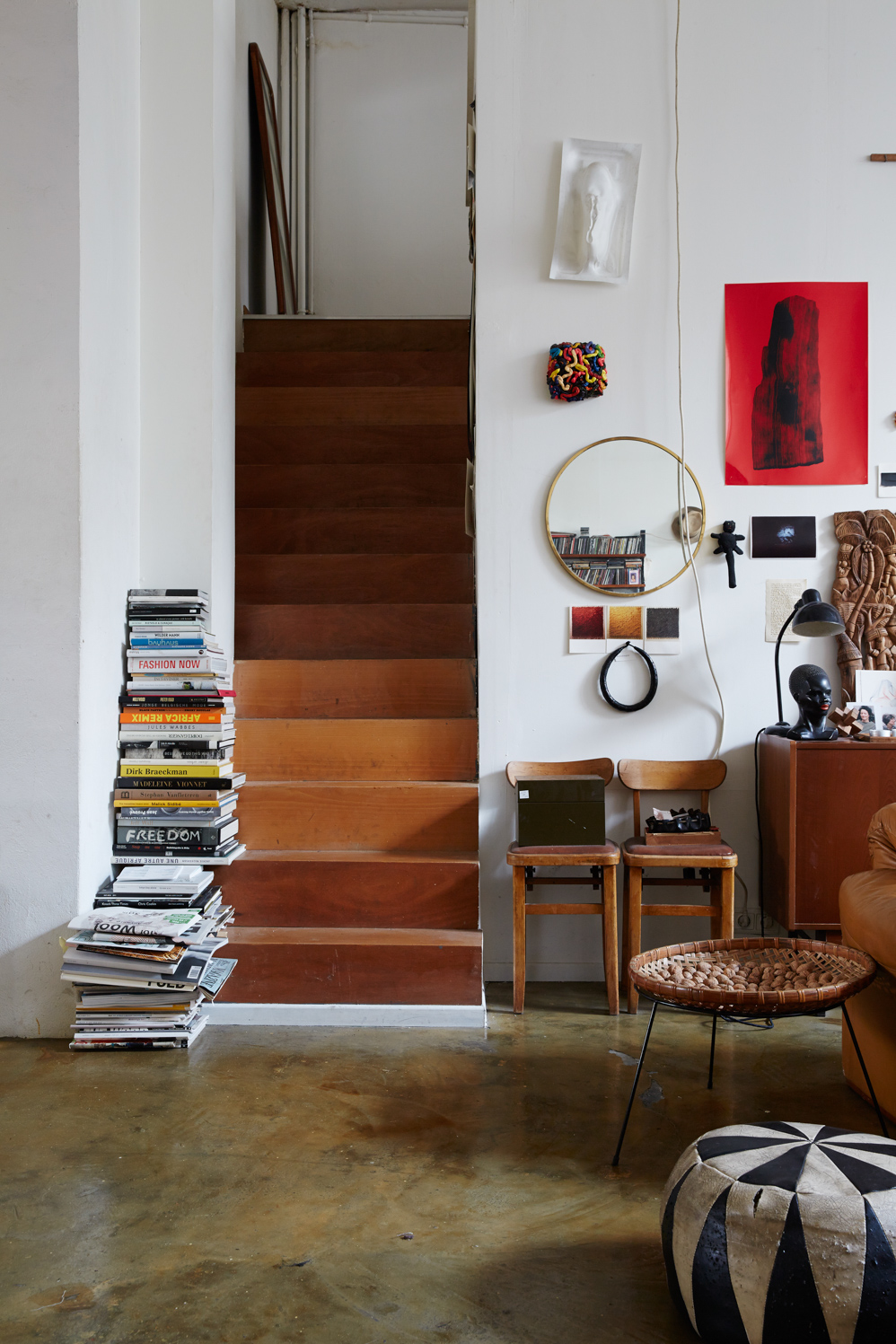
Born and raised in Antwerp, the designer’s menswear brand blends ethnic tradition with western characteristics in a manner that encourages the human body’s free movement rather than setting limitations through predefined sewn structures.
Together with his partner Piëtro Celestina, whom Jan-Jan met during his fashion studies at the Royal Academy of Fine Arts, he runs Atelier Solarshop just a few blocks away from their spacious loft where they live and work.The former solarshop carries Jan-Jan’s pieces and vintage treasures you’d wish you had hunted down yourself.
We visited Jan-Jan in his shop and world ‒the word ‘apartment’ would barely scratch the surface‒ and discussed the interaction between body and garment, subconscious influences through social media and non-existent plan B’s.
This portrait is part of our ongoing collaboration with ZEIT Online who present a special curation of our pictures on ZEIT Magazin Online.
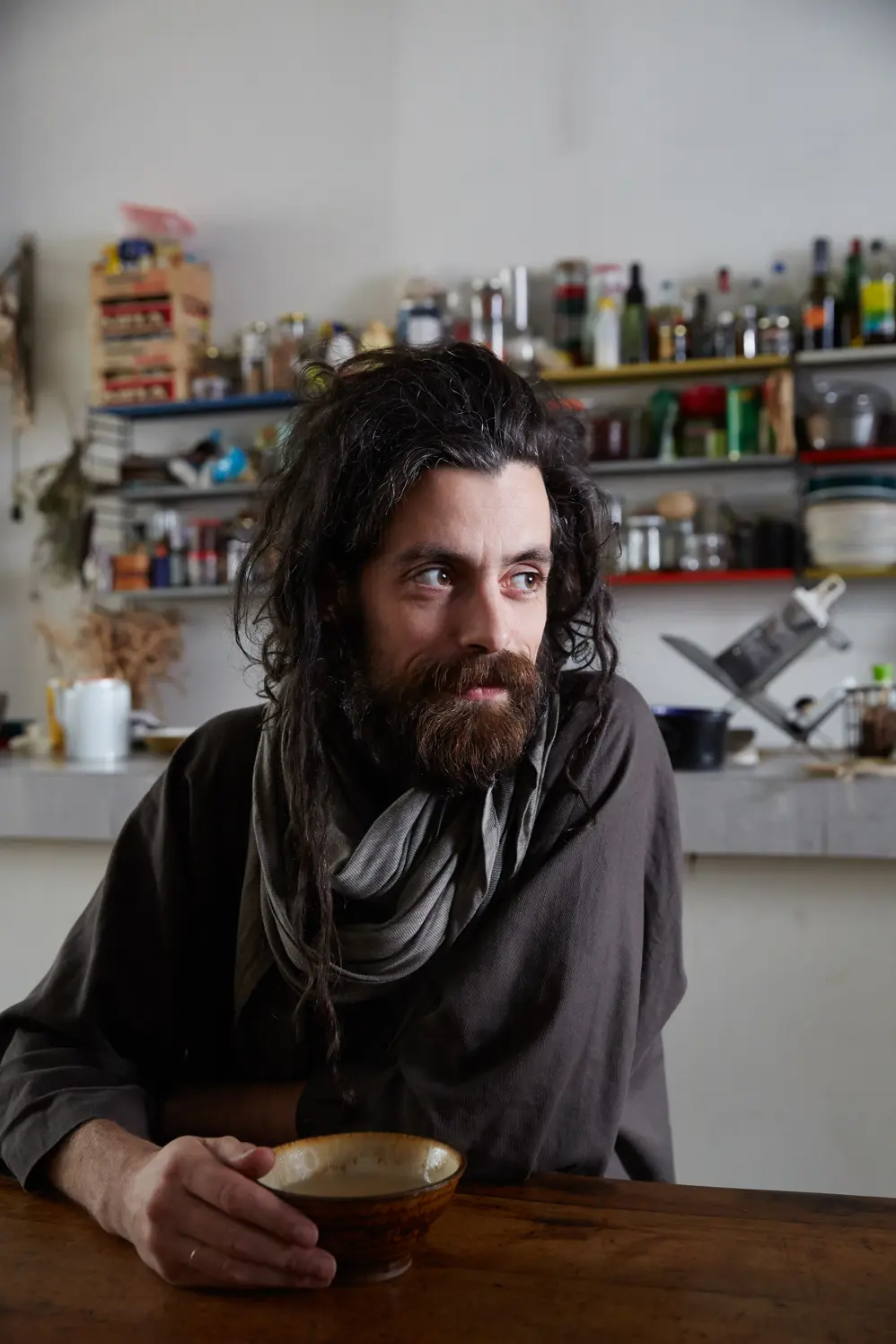
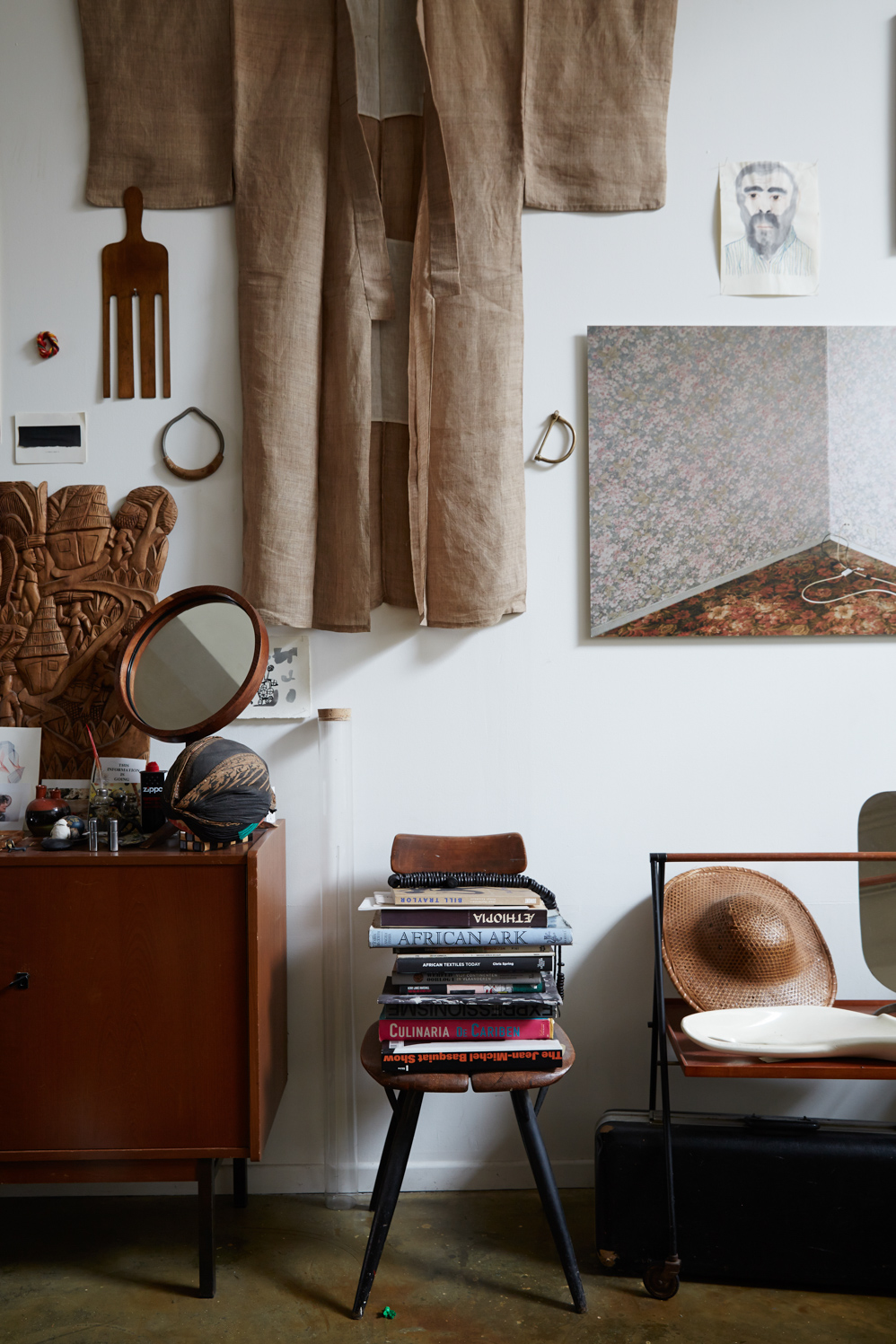
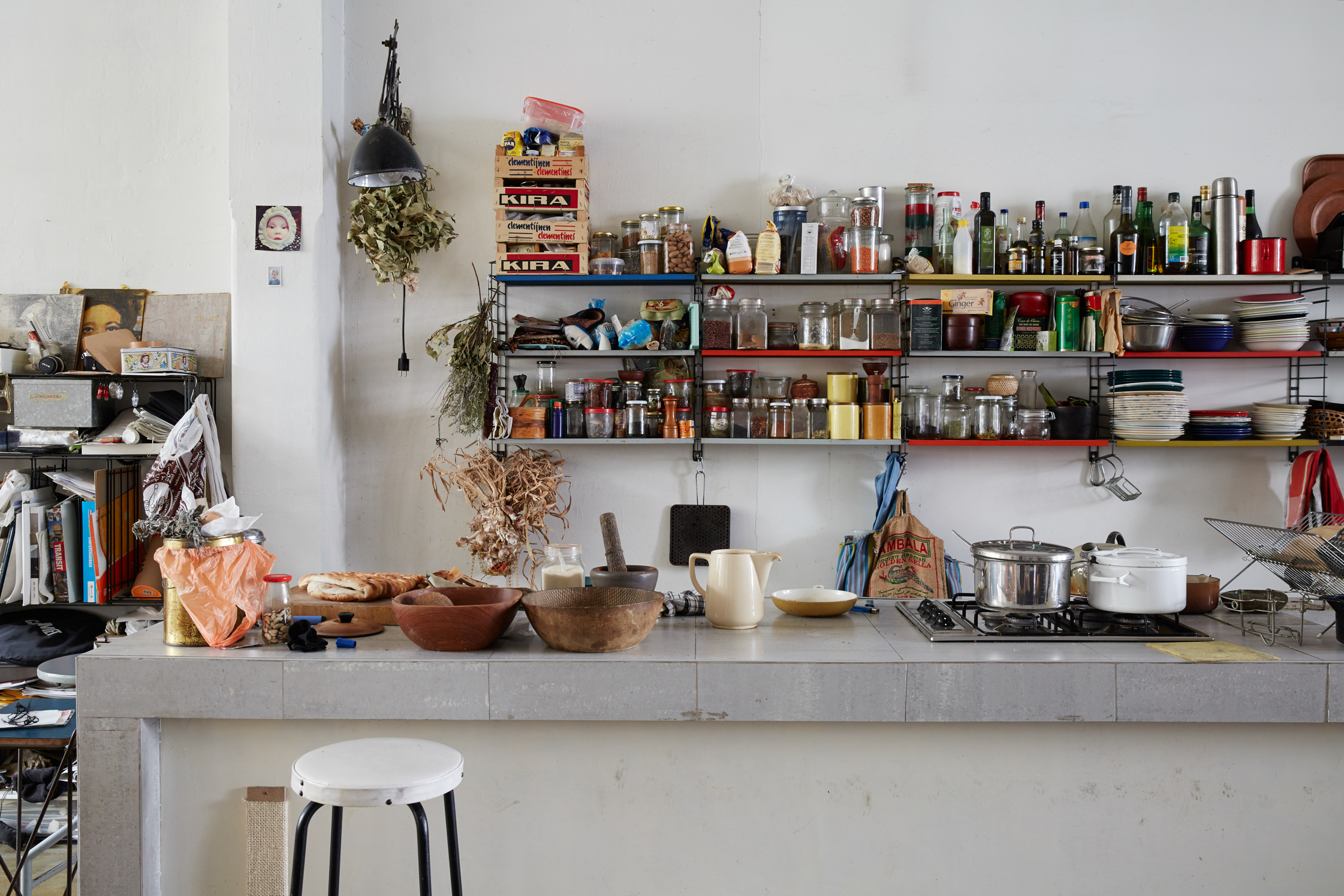
-
Thank you for having us in your wonderful home and studio. I am curious. What was this space’s use before you moved in?
It used to be a garage with a huge garden. The entire facade–where the kitchen stands now–was covered in windows overlooking the garden. Now, instead of greenery there is a garage next door for 14 cars.
-
Bummer. But at least you have a magical winter garden.
That is true. We love it. Not just for ourselves living here but also because my partner Pietro uses it for all the lookbook photographs. We are doing everything on our own, everything is done in here.
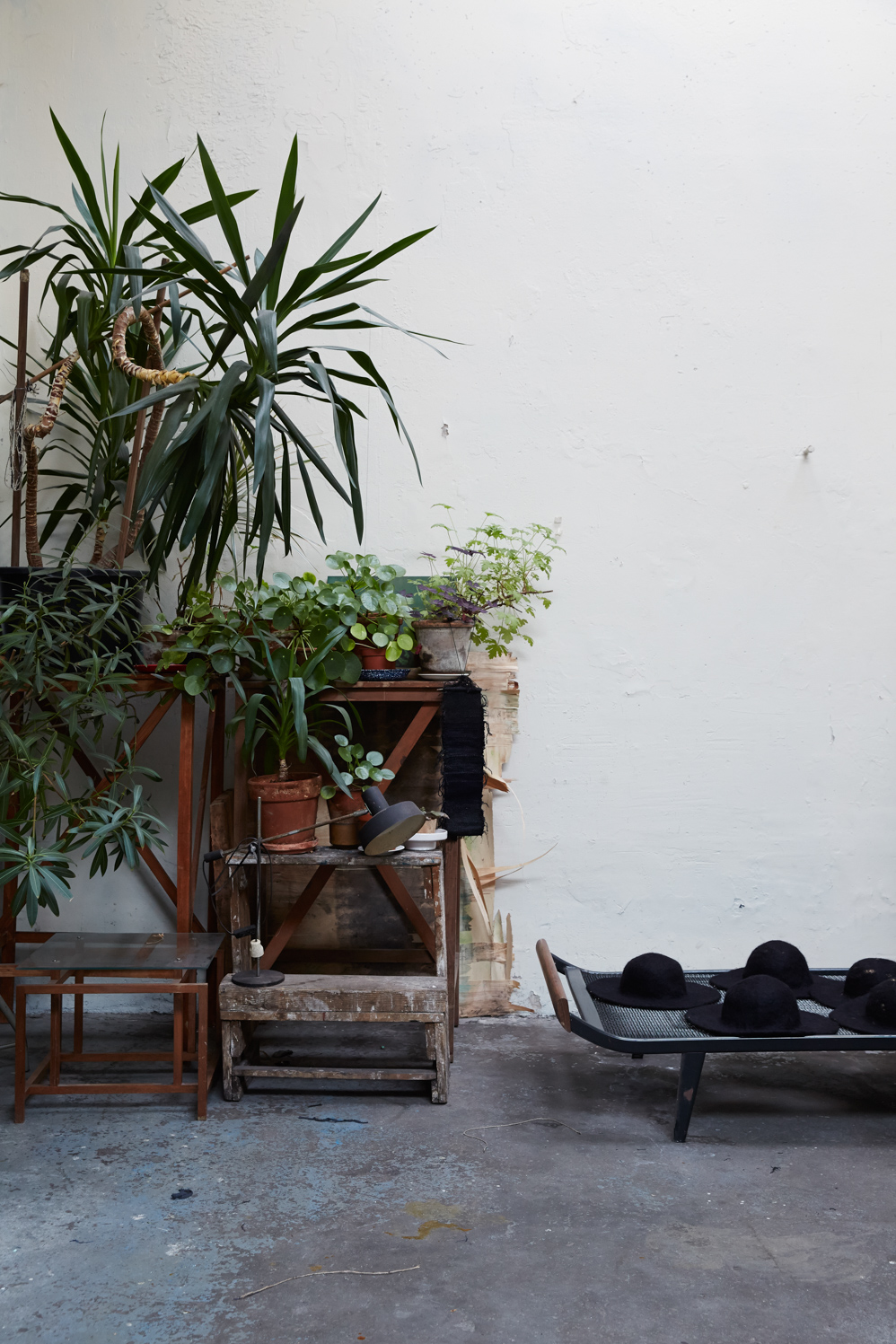
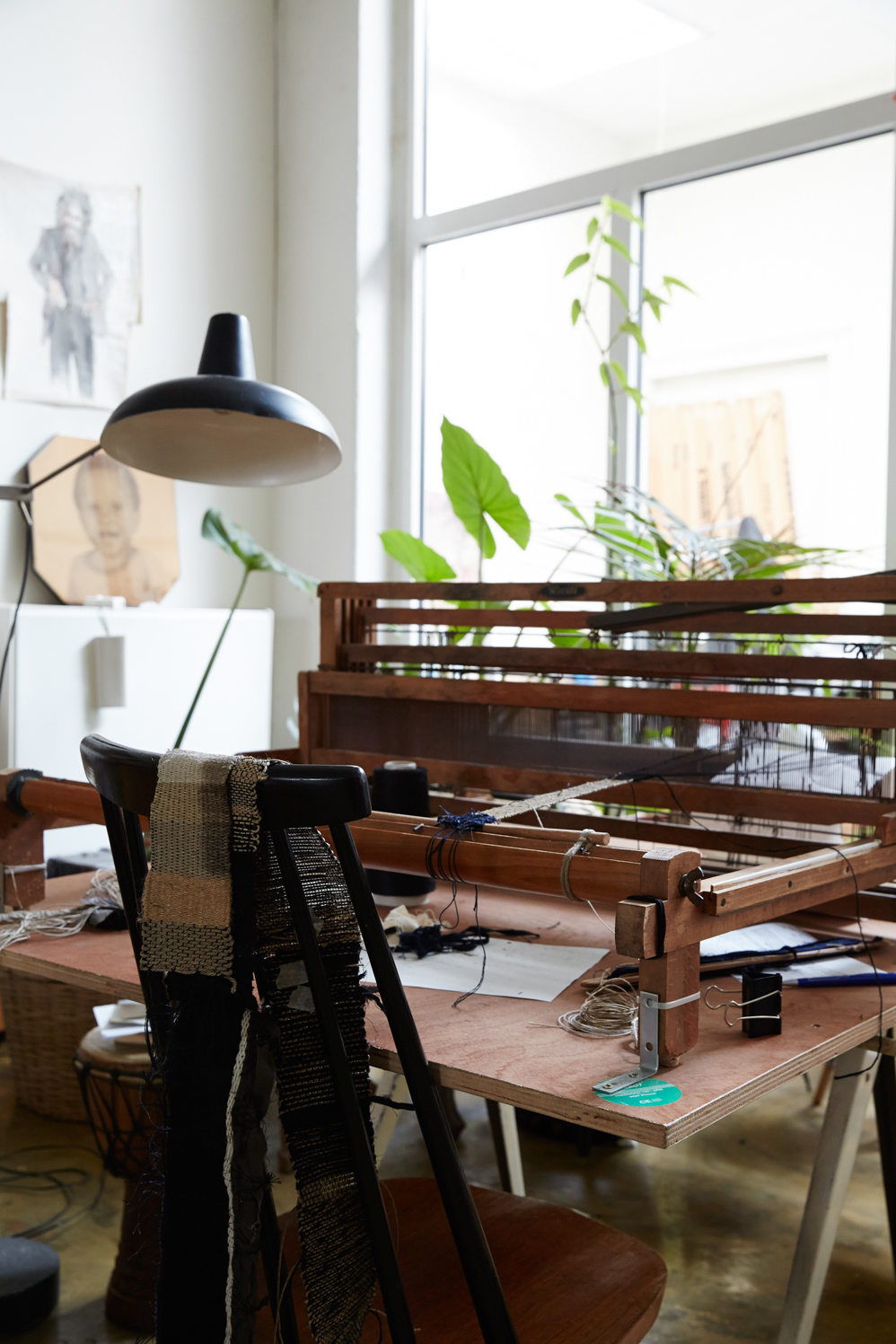
-
Yeah it looks like it. I am actually surprised you’ve only lived in this space for three years. It has such a special vibe and there are tons of items and corners to explore in here. It looks like a place you’ve spent a lifetime in.
Well, Pietro, Charlotte ,a good friend and cook who lives with us, and me are all … let’s say collectors.(laughs) We don’t throw anything out.
-
When I look around I ask myself “Why all that empty spaces, white walls, minimal interior you see everywhere?” This space feels much more real and personal.
To be honest, I would really like to be a minimalist but I just can’t.
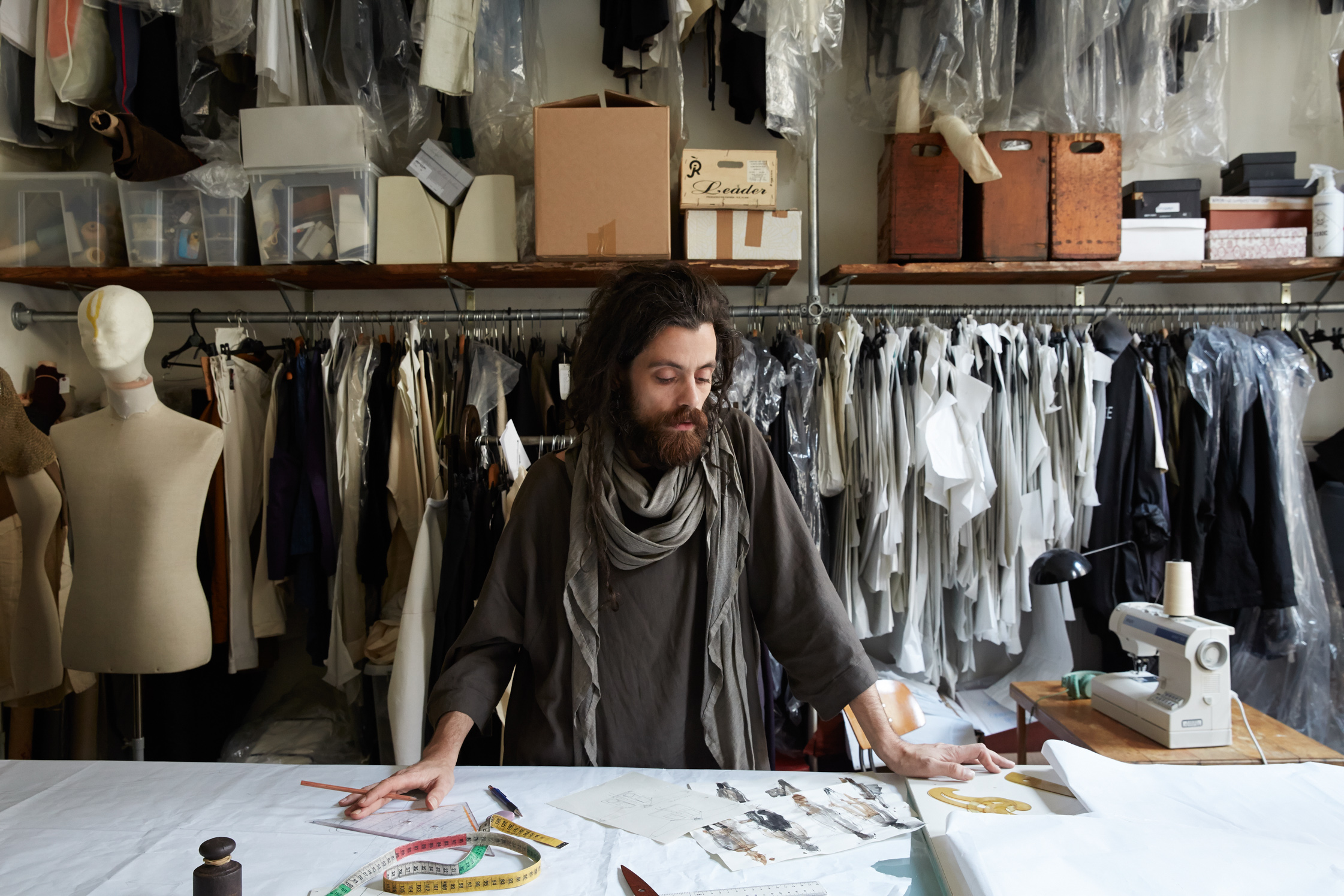
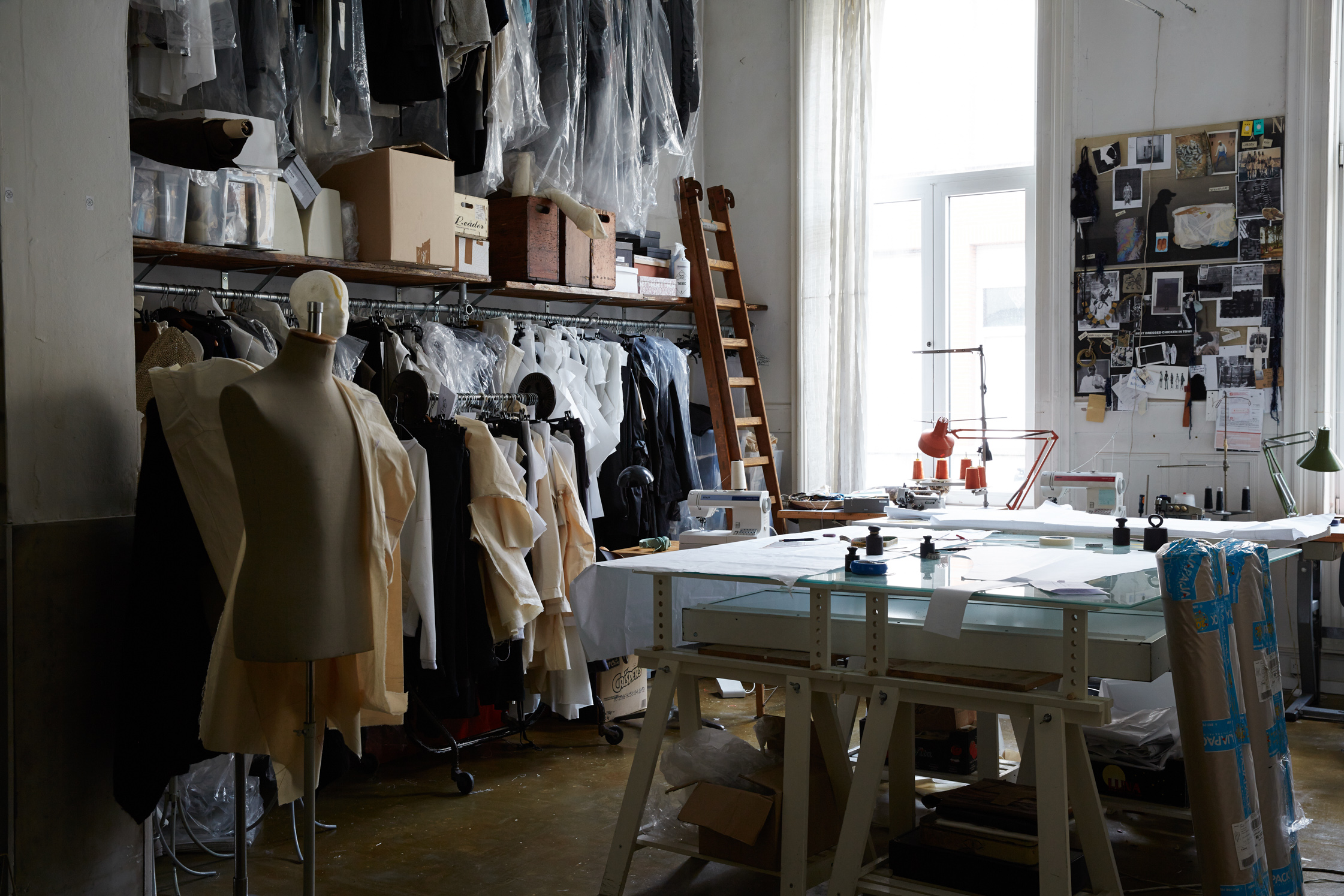
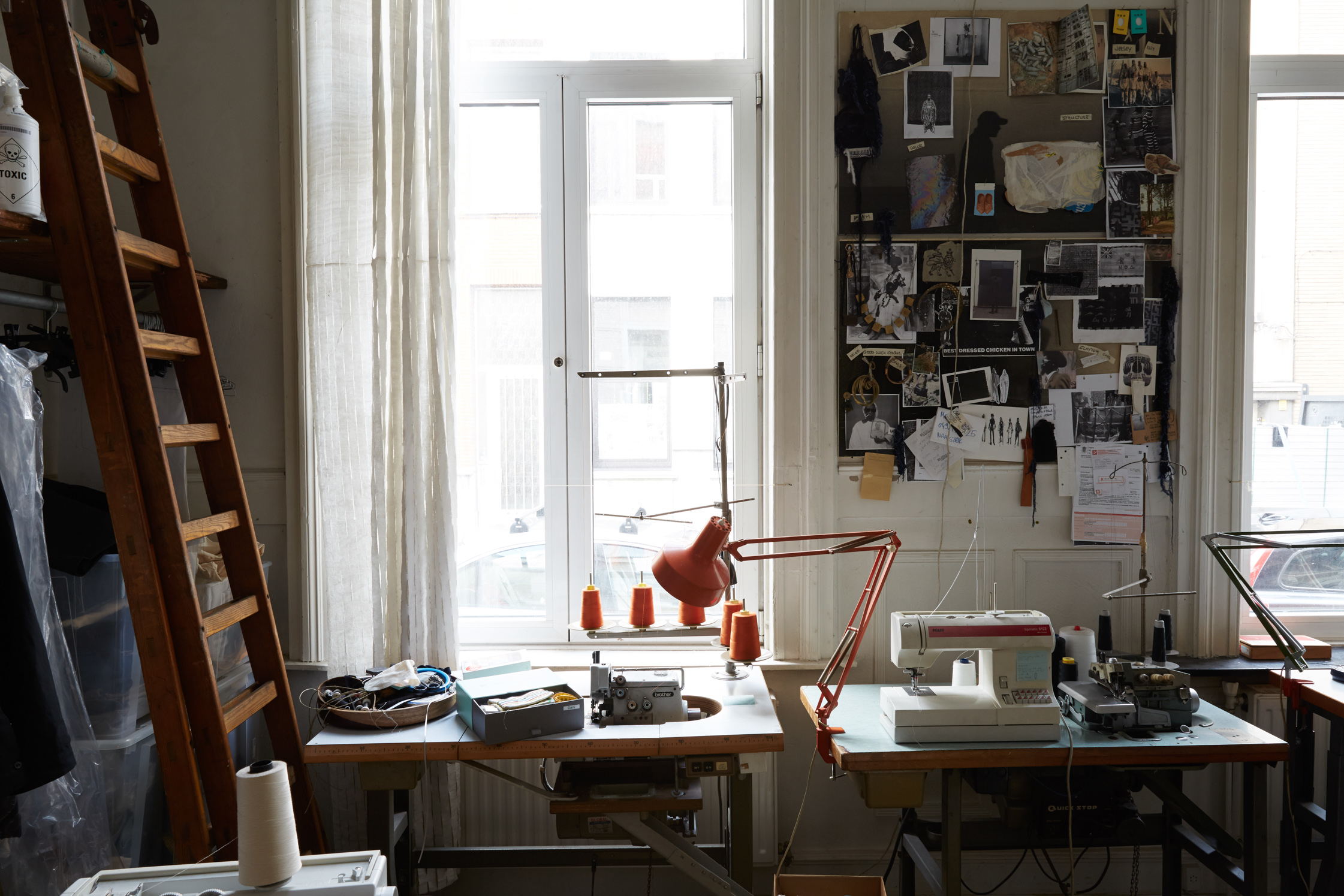
-
However, there is a certain minimalism in the way you approach fashion production. You don’t work so much with seasons, right?
During the first three years, I used to design only one annual collection. I still don’t really believe in the seasonal wardrobe. Every time of the year I wear more or less the same clothes–sometimes one layer, sometimes five. That is how I define seasons.
-
But now you are releasing two collections per year, right?
Yes, I realized that building a business around only one week in a whole year is not so handy. Plus, to be honest, I had too many ideas so a second collection seemed natural.
For the “outside world”, my work is separated in two seasons, winter and summer. Personally, I see the winter collection as a “project” which is made to be treated like a kind of capsule. This gives me the freedom to go out and start projects with other artists or collectives. I want to keep that option open.
-
How did you meet your partner Pietro?
Pietro and I met at the Academy and, after that, we kind of lost touch. He was there only very briefly. Shortly before my graduation we met again and we’ve been working together ever since. I’m responsible for design and production, Pietro does management and communication–it’s a cliché situation but it works. Oh, and my mum does all the finance. It is kind of a family buisness now.
-
Which specific topics do inform your design choices and directions?
My collections always have the same central theme. The same moodboard has been on my walls now for three years. There are some things I take away or add but in the end it is a very slow process that retains certain key elements. I don’t reinvent myself with every collection. I see it more as a continuous story.
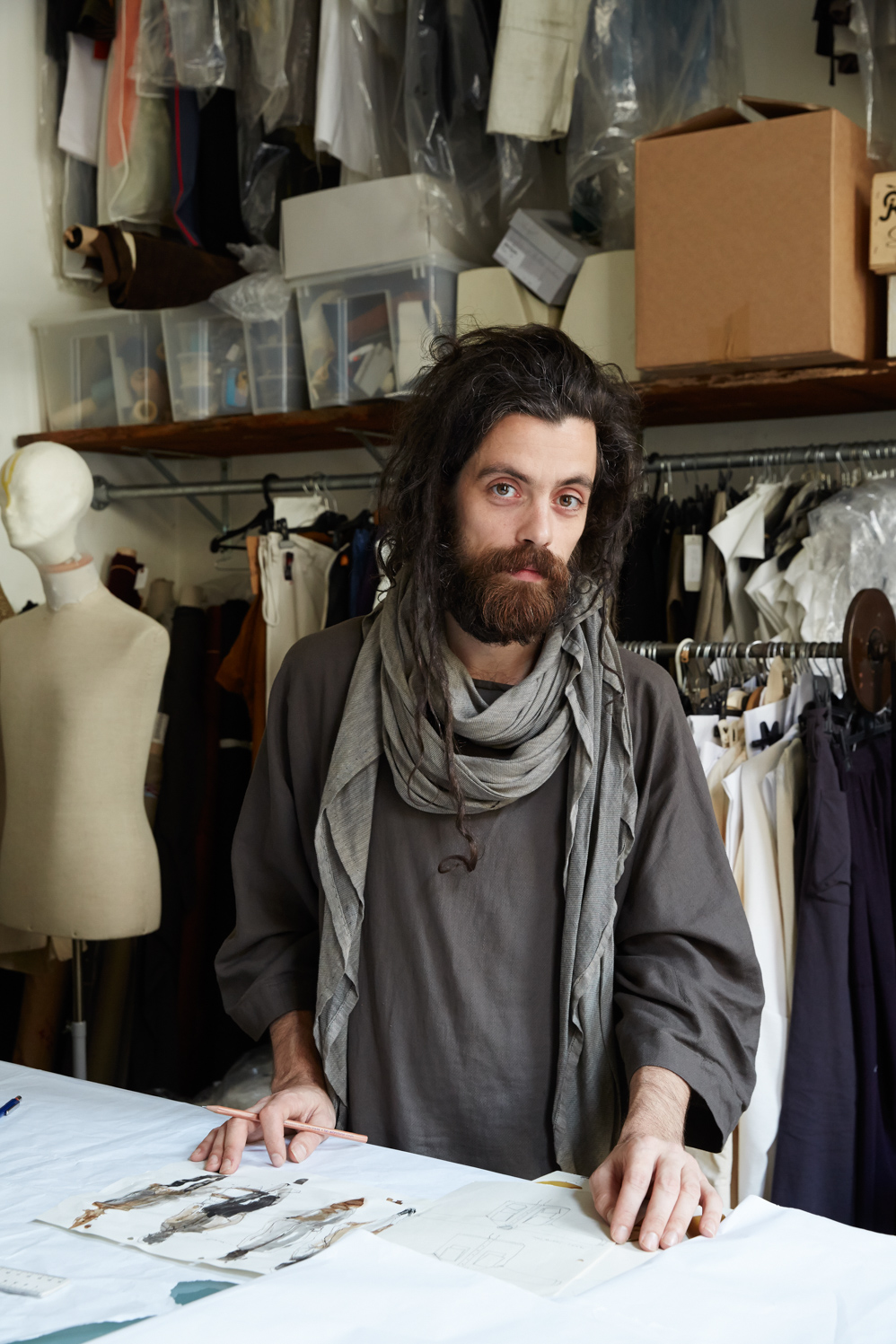
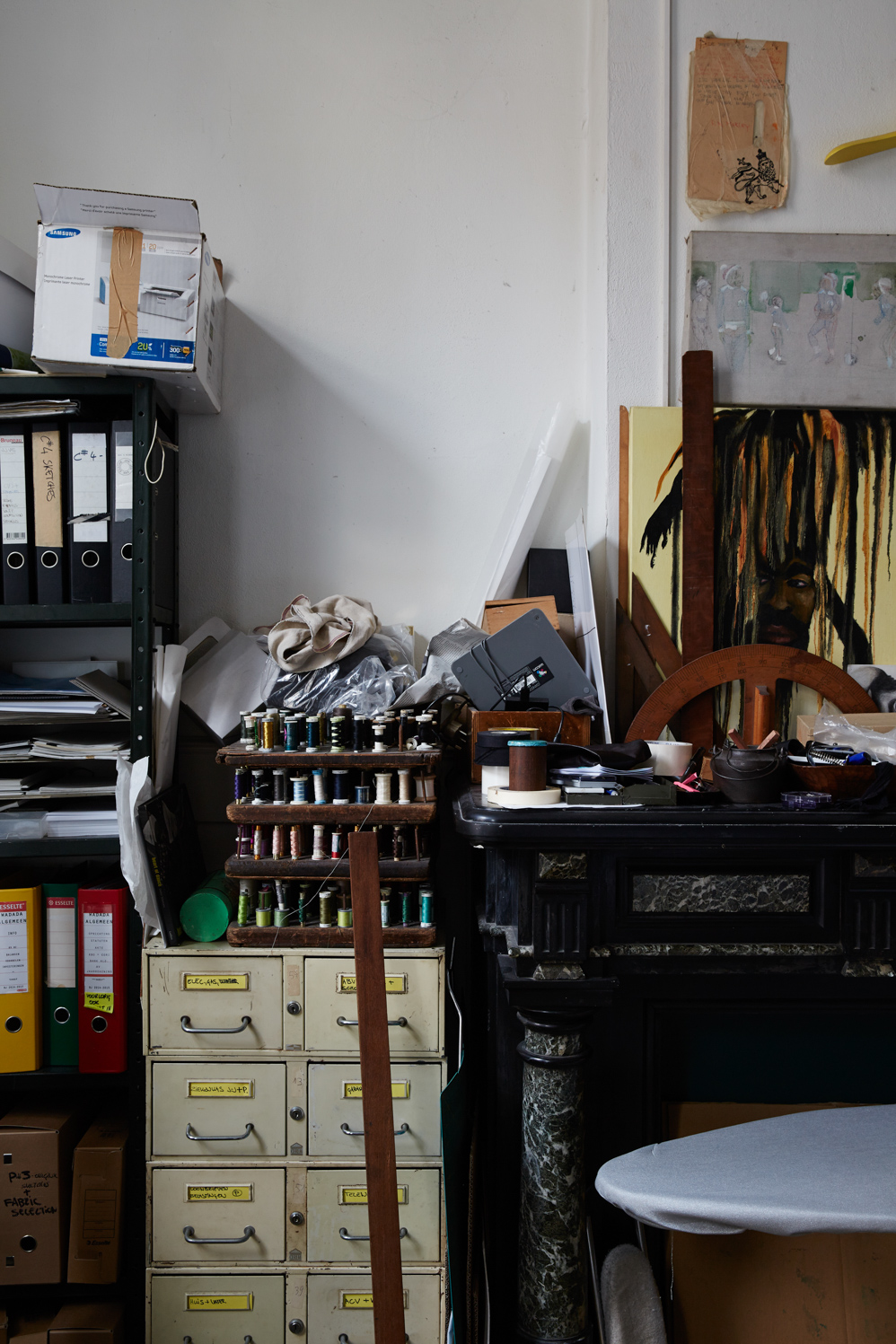
-
And what is that story about?
It might sound a bit esoteric but I would say it’s a story about comfort and freedom. I don’t want to feel “obstructed” by clothes but rather liberated. I don’t want to dress the people who wear my clothes in a certain way, they should be who they are and act as they would. I have the feeling that clothes are often made as a second skin–a skin of a second persona. My clothes are open for personal interpretation and styling but, of course, they have a certain identity too-
-
How would you define that identity?
There is something I come across a lot in folk culture and traditional garments: the fact that the body shapes the garment more than the other way around. A kimono is the same cut and size for men and for women. A boubou in Africa is merely the width of the fabric–how it looks depends on how you look.
I really like to see the variants of fabric while people move and interact.We are good enough as we are. I’d say that’s what defines my clothes along with natural textiles, soft colors, monochromatic palettes and less and less seams.
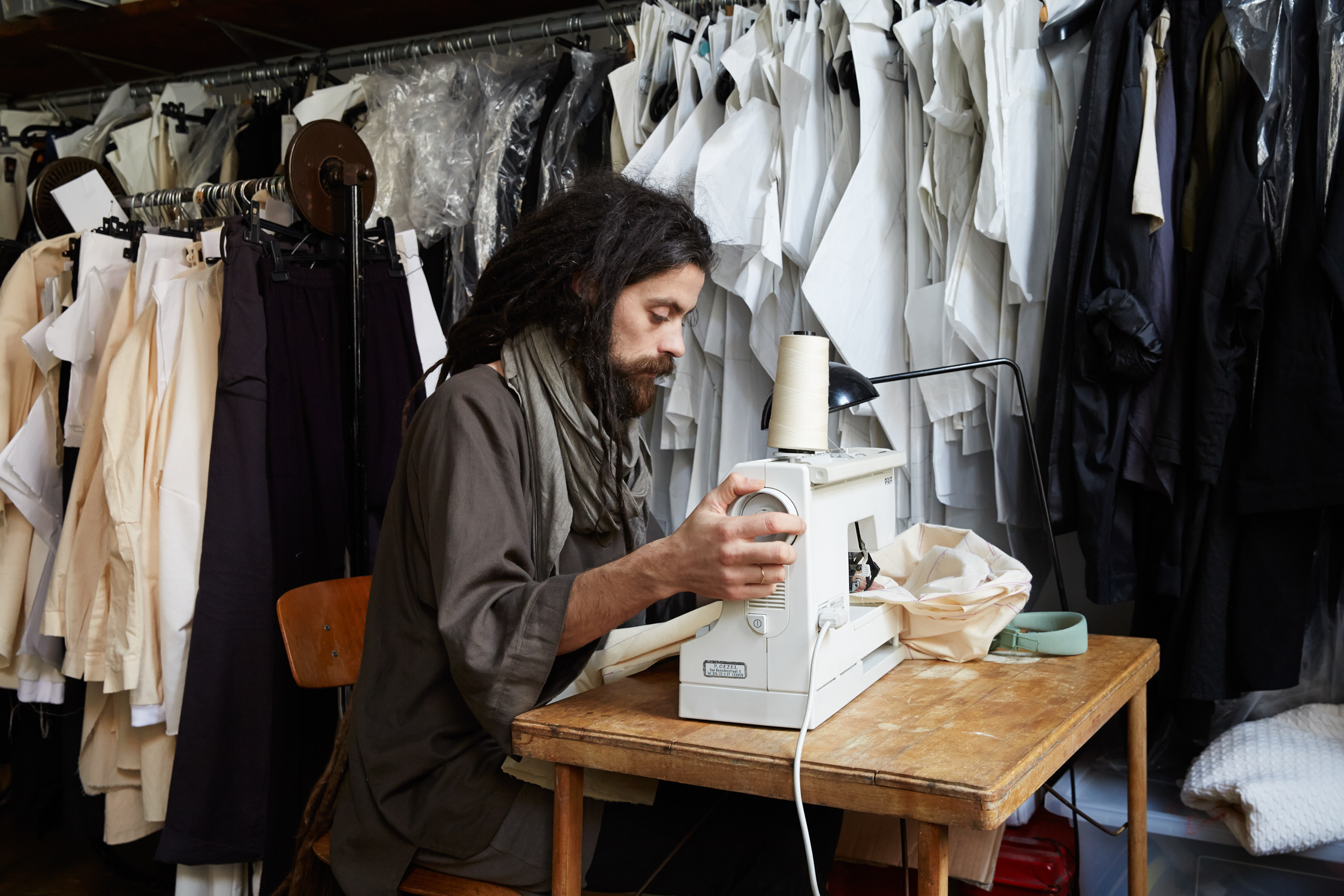
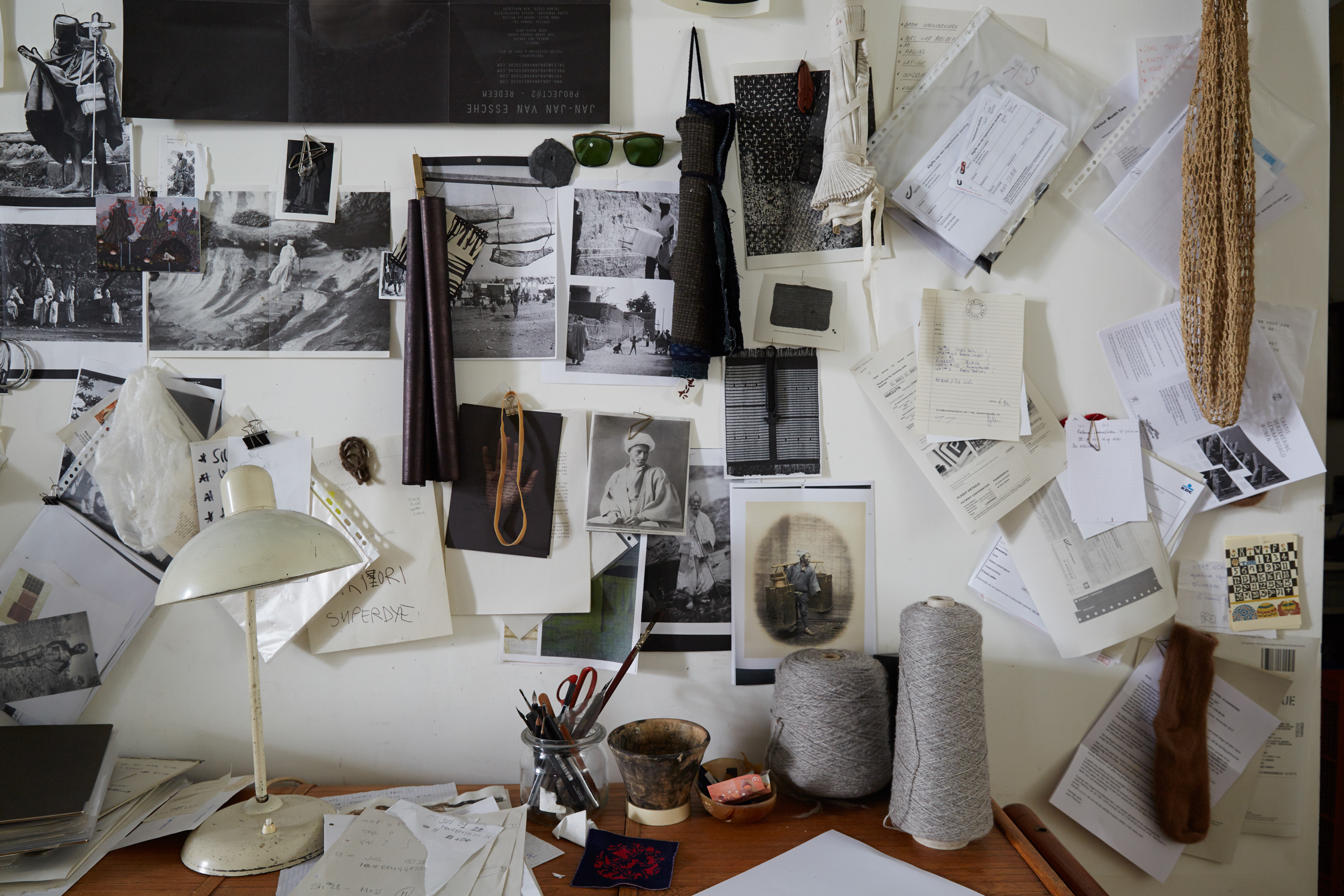
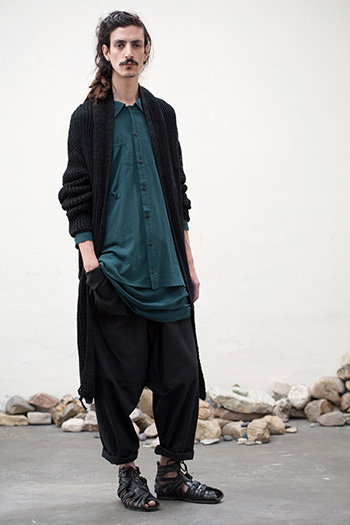

-
I really love it when you don’t feel the actual clothes too much.
Exactly. There are some days when you really want to feel denim and its the rough structure. On other days you want really light drawstring pants that you hardly feel or even a jumpsuit with no waist. Girls wear dresses–they know the feeling of body freedom. Men, on the other hand, don’t.
-
You also wear your own designs, right?
Yes, but less for an aesthetic reason and more to test it on my own body.
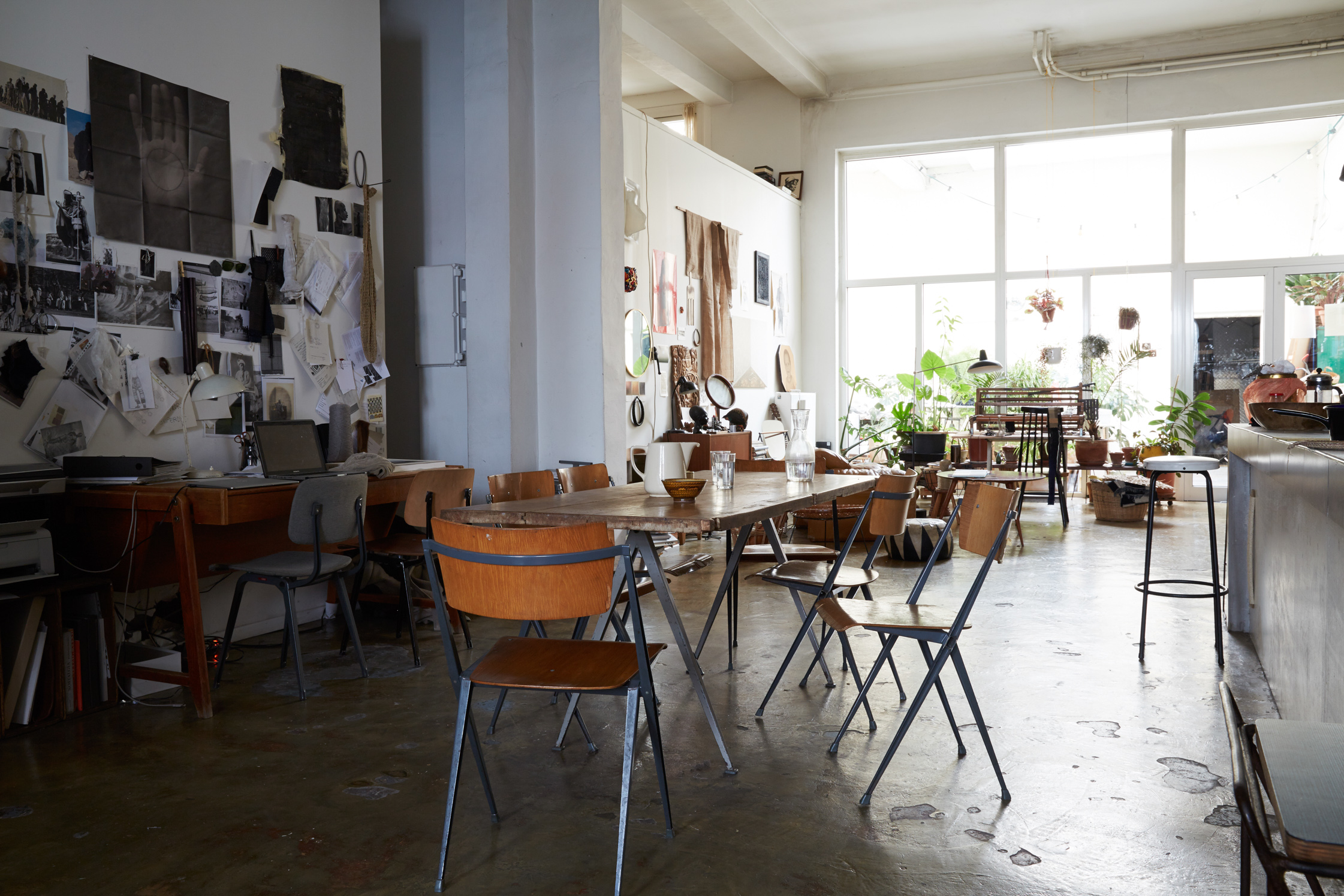
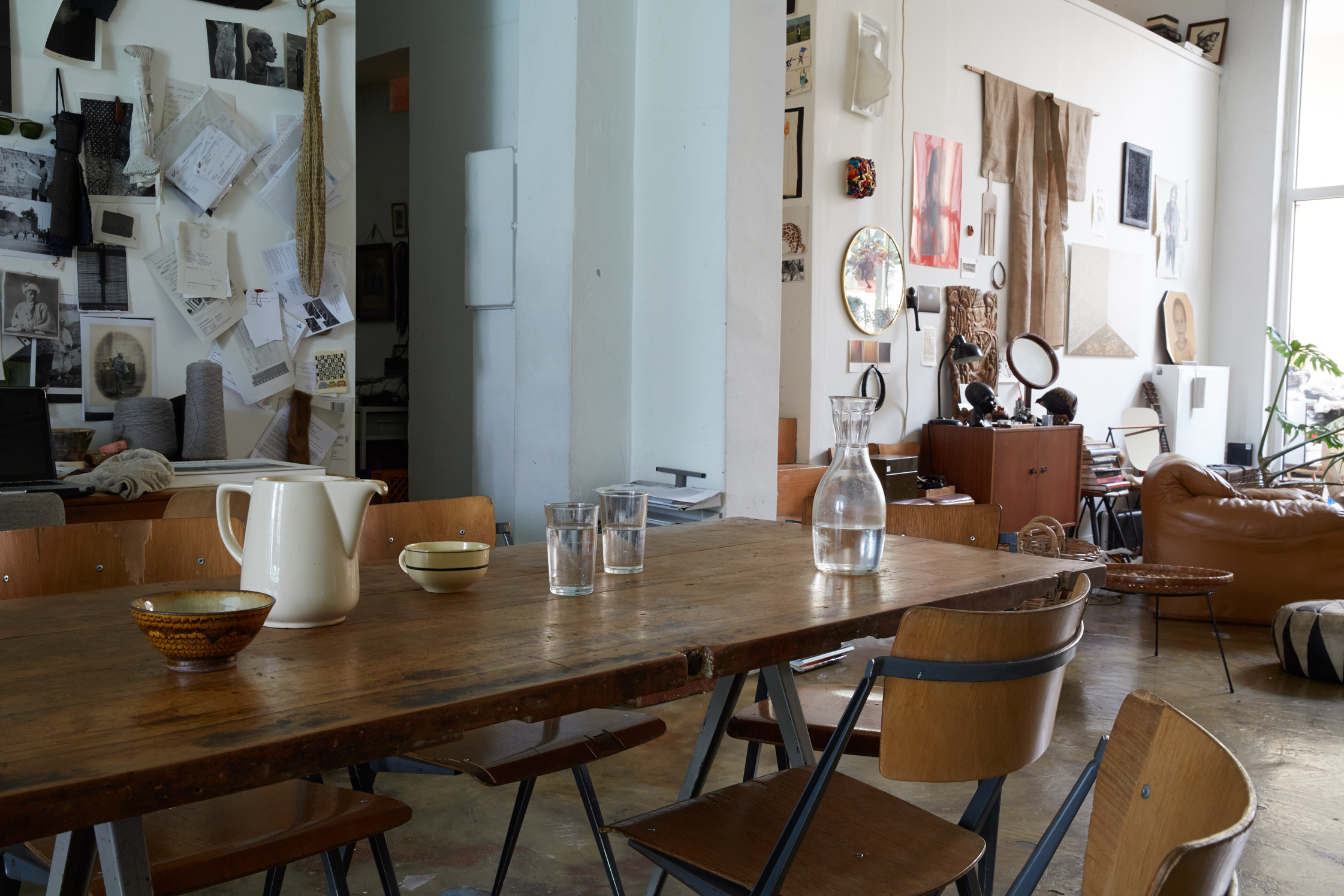
-
Do you often spot your designs on people?
Not that often. It happened to me lately in Brussels and I was really happy. Of course, I know the people that come regularly to the shop. I have to say, though, that I don’t follow my clients or who wears what I produce–I’m also not really active on Instagram and these other channels.
-
Do you generally dislike social media, then?
No, I don’t have a problem with it at all. I just know it’s not good for me. And I don’t want to know what’s going on there.
I would like to think that if I joined I wouldn’t be influenced by all of that but I guess I would.
-
It’s hard not to. We are all subconsciously copying each other, it’s how people work, through empathy.
Yes, and I am so afraid of copying–and I don’t mean copying a design. But even if it is a light or a color, it can just be very influential. Plus, I’d lose a lot of time–time which can be used for creating more.
I am on Facebook, though, and I have to say I am always pretty shocked by how much time I spent scrolling down endlessly.
-
Yes. There is a lot out there and especially when it comes to fashion content you really need a “strong filter”.
Yes, your “inner filter” gets blurred. That’s how I feel.
The same goes for magazines. For example, I only look at style.com when I am in Paris during fashion week. While being there, I’m already part that world but at the same time totally focused on my collection. My relationship to the fashion madness is a stereotypical love-hate relationship.
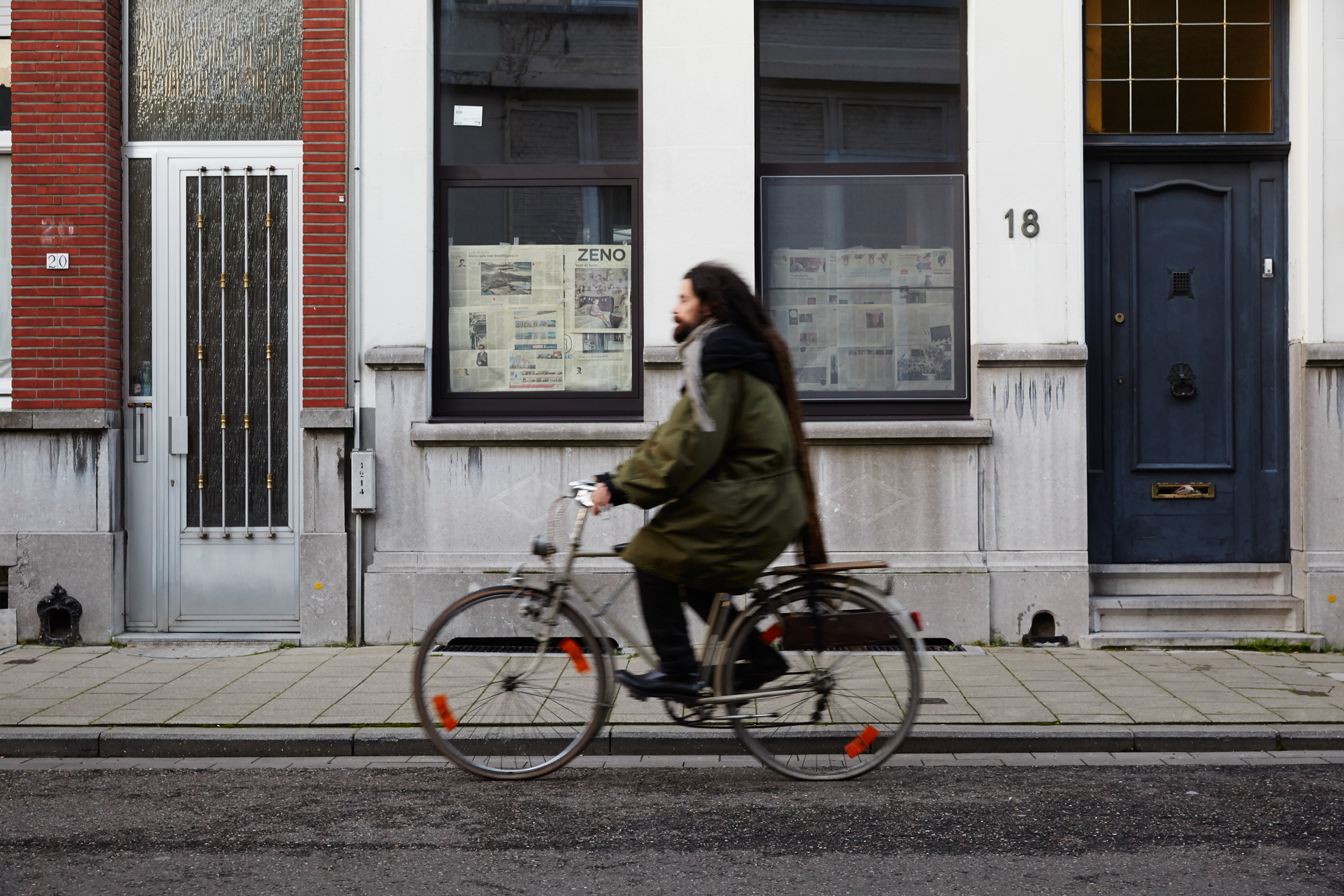
-
But, are you generally keeping up to date with the commercial fashion world, so-called trends and latest collections?
I am following what I cannot escape. For example, I know which designer is currently presenting a collaborative collection with H&M. (laughs) But I don’t really read magazines. I’d rather look for personal stories and explorations.
-
Is there a specific one you’d like to share?
Yes, there is one. Last summer Pietro, Charlotte and I had all our 10 days of holidays left so we decided on a spontaneous trip to the south of France. Our friend suggested to visit another friend of hers and that’s how we met an amazing 82-year-old lady, Ann Flaten Pixley. We wanted to just stop by and say hi but ended up staying at her house for five days.
She used to be an artist but is now totally into gastronomy. Before her artistic path, she was a textile spinner, dyer and teacher. She has a huge collection of vintage Miyake men’s shirts and always used to wear a different one at each of her openings. I was familiar with Miyake’s sculptural clothes and pleats but I had never actually seen his ready-to-wear men’s line.
This is just a small detail of a highly inspiring trip.
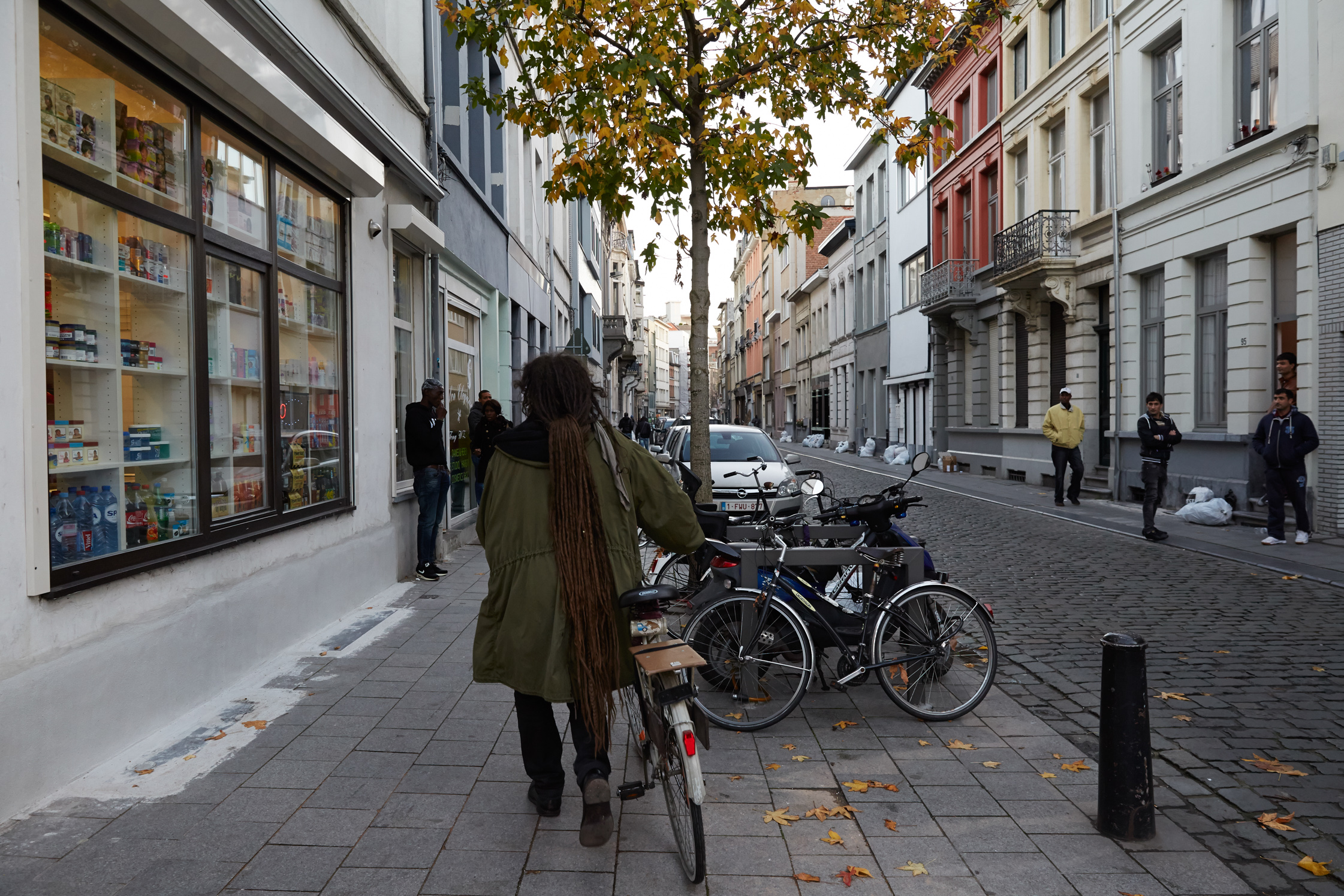
-
How was your time at the academy?
I worked a lot, that is for sure. But to be honest, despite the fact that a lot of my colleagues were struggling, for me there was no extra psychological burden. Maybe because this is my hometown and I felt like living at home. Also, most of my friends didn’t have any relation to fashion.
If I look at how I started my studies and how I finished, the transformation was incredible. For all of us in there. Indeed it was a very intense period but I didn’t realize it back then because I was going through it with a certain lightness. Most of the students came from the other side of the world and fell right into the fashion world in Antwerp and the Academy.
On the other hand, the fact that I stayed with my parents, made me a bit of an outsider in my class. I don’t think anyone said it but, looking back, I wish I would have been a bit more into it, more involved with my peers. I might have been a bit absent. All in all, I’m happy I did it. -
Did you know at an early stage that you would become a fashion designer?
Yes. I wasn’t actively trying to achieve that goal with every step in my life, I was more like, “I will just do it. I am going to do what I like to do.” Strangely enough, I didn’t even have a plan B, even though I knew there was an entry exam for the academy and I had certain weak points. It definitely wasn’t sure I will make it from the start but even in that case, there was no compromise. Maybe I was just lazy to come up with a backup plan. (laughs)
-
I don’t think that’s laziness. To be honest, not having a backup plan is something motivating that pushes you to be the best at what you do. Perhaps it’s even the key to success.
You might be right.
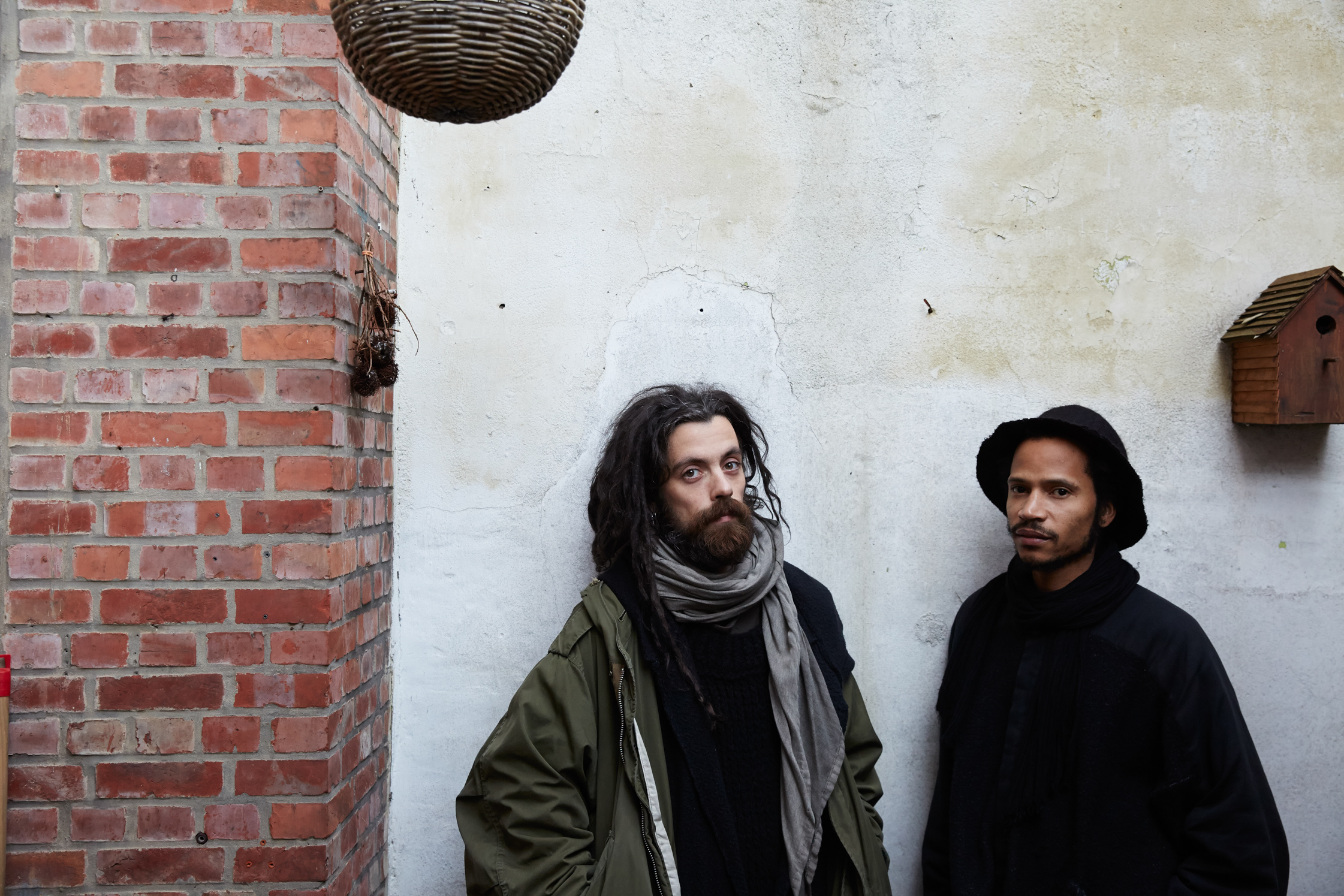
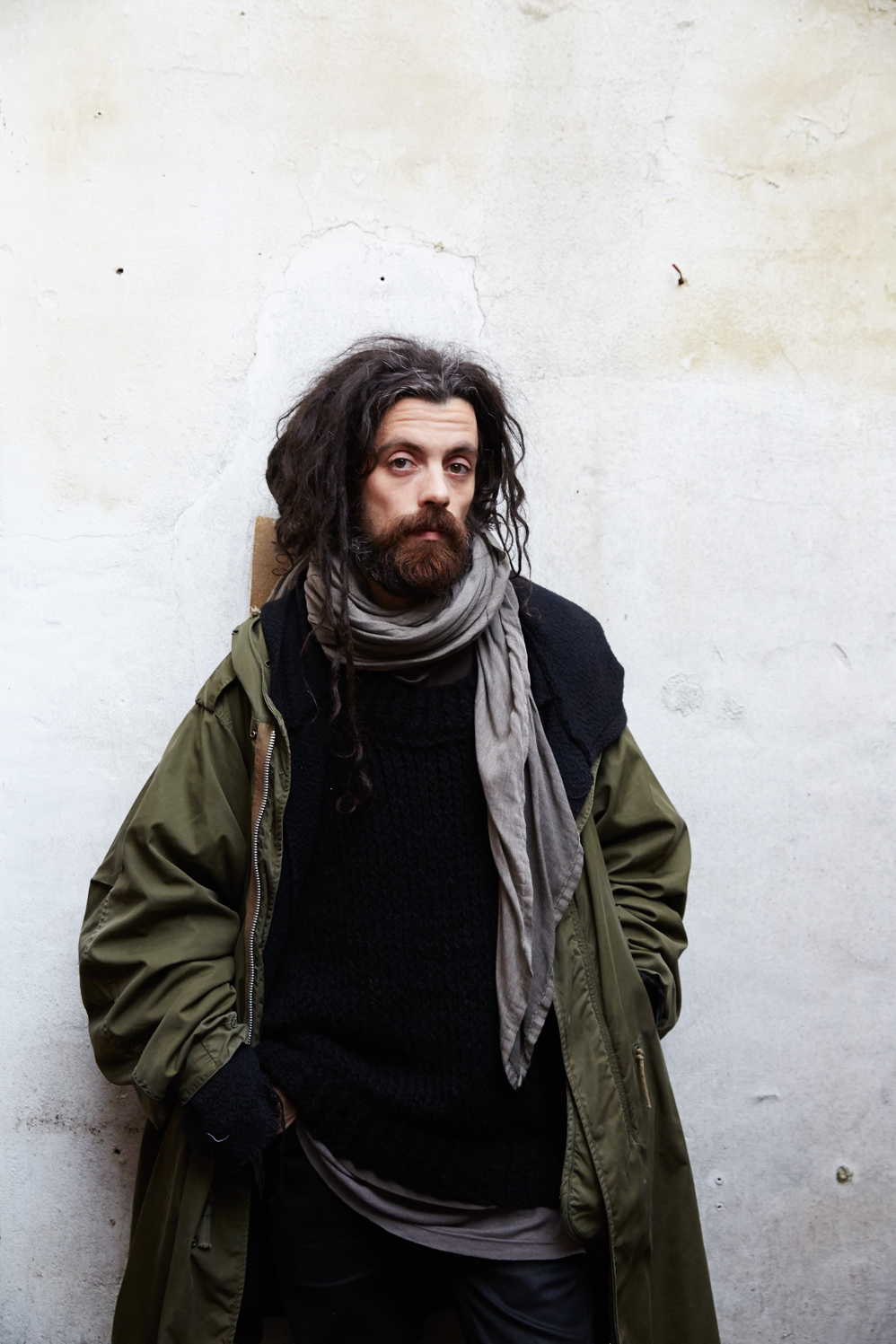
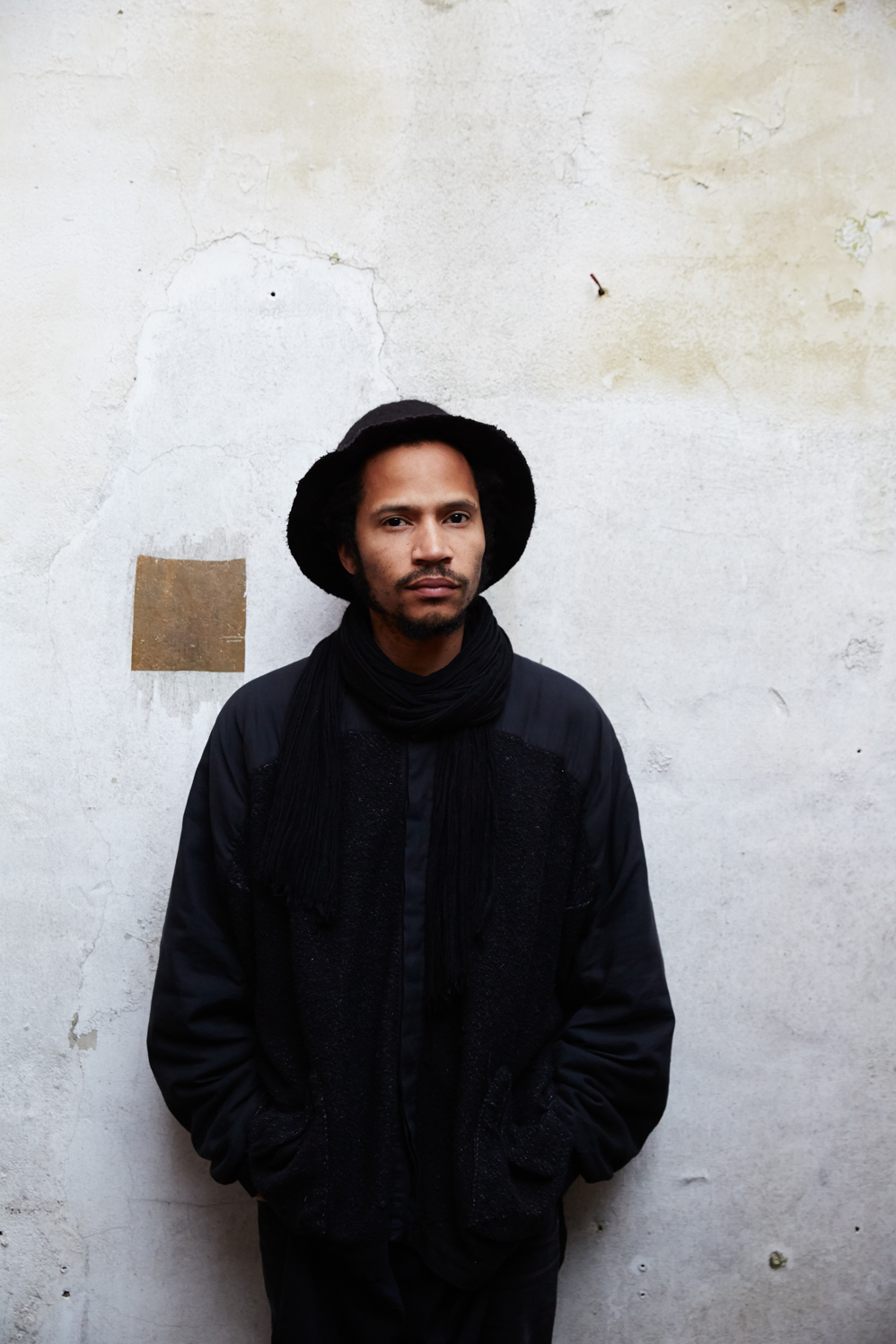
-
How did everything with Atelier Solarshop start?
The first years after my studies I wasn’t really sure what to do and how to do it. I was a little bit involved in my father’s film business and, until a certain point, I did kidswear and worked for Lee Jeans as a design assistant. But it came to the point where I started to feel an urge for setting up my own business. At that moment, almost like a sign, the space of what is now the Atelier Solarshop became available for renting.
-
What was the space before?
It was a solar shop specializing in engineering solar panels as alternative energy sources. Much like juice makers running on kinetic energy from bicycles. I think it was a bit too early for that back then. Now, the owner has resurrected his shop but from the comfort of his living room.
At the time the space was offered to us, I was writing a sort of manifesto with all the criteria a place would need to fulfill for me if I ever opened an atelier. Some of them were the possibility to work with other people and use the space for public exhibitions. Pietro and I went to see the place and realized that it completely aligned with our ideal space.
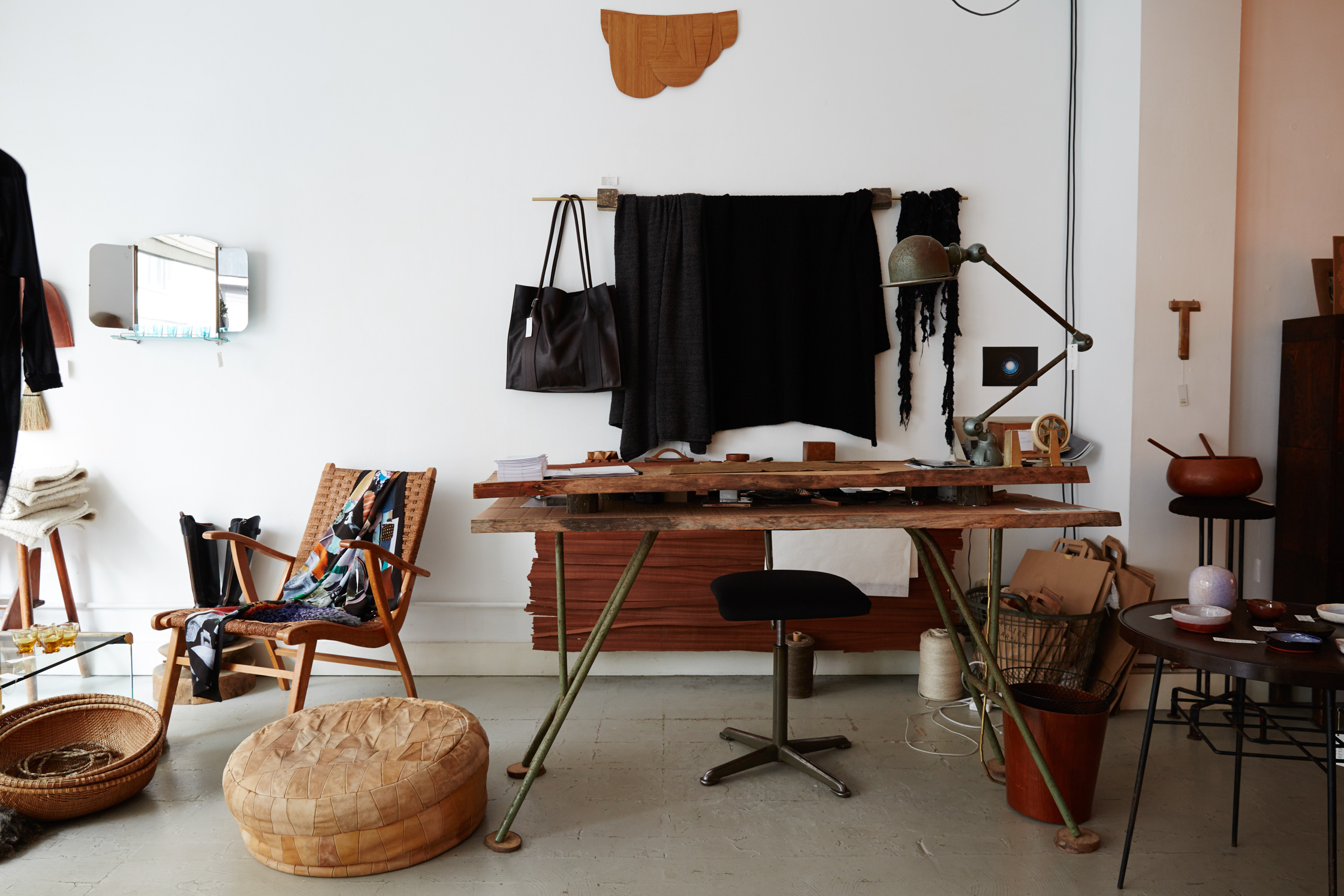
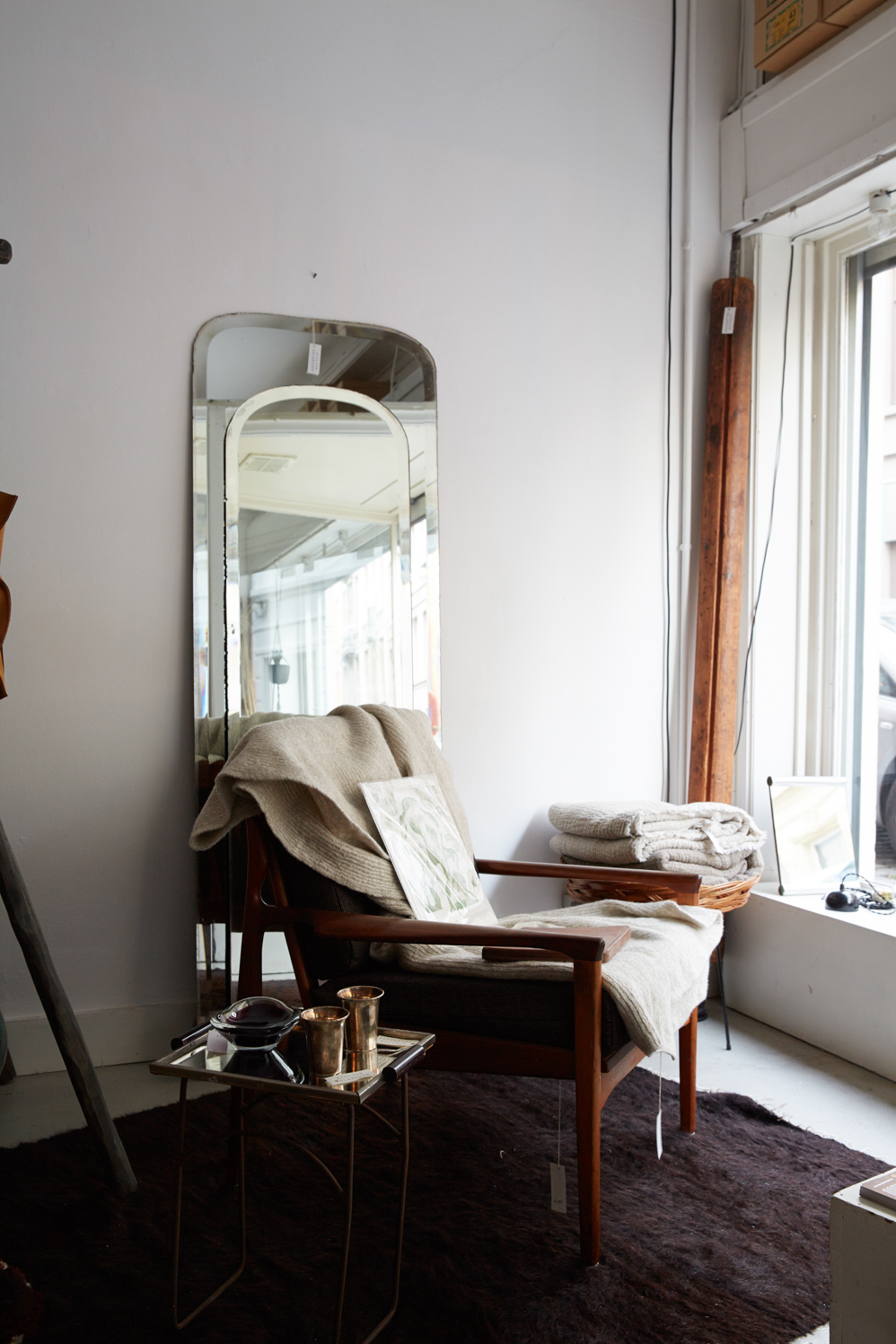
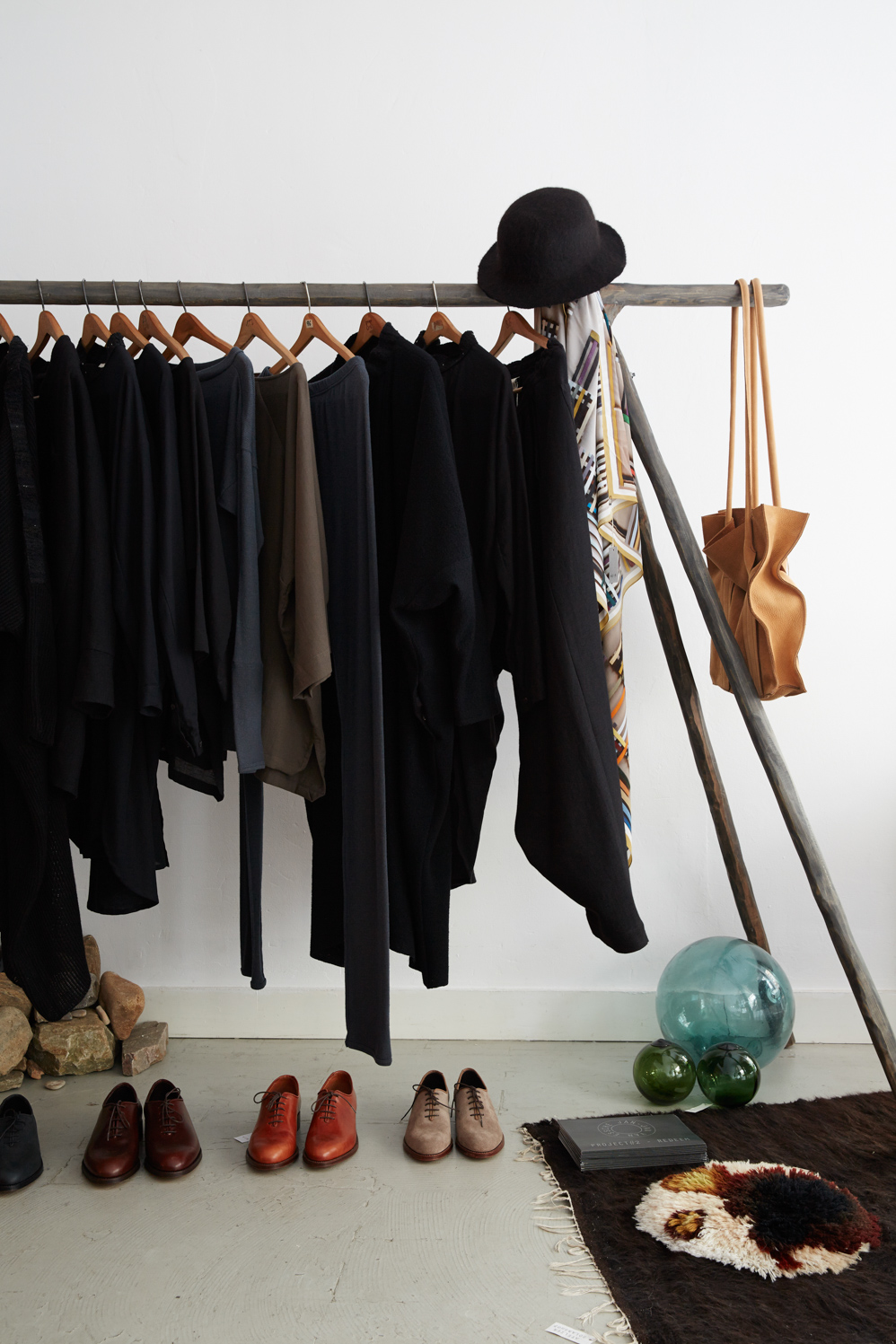
-
And you knew right away what the overall concept would be as well as what the shop would carry?
In the beginning it was a space for a lot of things: sometimes shop, sometimes studio and sometimes pop-up shop or restaurant.
Our first collection came out soon after this. It was a kind of now-or-never timing. That was 2008. A year later we opened.
-
You are a traveler and keen exploring different cultures. But what is the actual reason you never left your hometown, Antwerp?
To be honest: I never saw any reason to leave. And – look around! I have everything I could ever wish for, just here.
Jan-Jan, it was truly inspiring to meet you in your world! Find out more about his line and visit Atelier Solarshop online.
Thanks to This Is Antwerp for introducing us to Jan-Jan, Pietro and the city’s creative scene!
Photography: Nicole Franzen
Interview & Text: Zsuzsanna Toth
